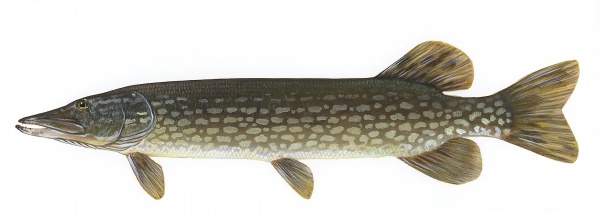Facts About Esox
The Esox genus, encompassing freshwater fish such as pike and pickerel, belongs to the Esocidae family. These fish are native to both North America and Eurasia and have been present since the Paleogene period. Easily identifiable by their torpedo-shaped bodies, sharp teeth, and grey-green coloring with distinctive markings, pike can grow up to 1.83 meters (approximately 6 feet) in length and weigh as much as 35 kilograms (around 77 pounds). The genus includes seven known species and several fossil species from various geological eras.
The name "Esox" has Greek origins and is linked to Celtic and Gaelic words for fish. The English term "pike" refers to the fish's pointed head, with the plural form also being "pike." Renowned for their predatory behavior, pike feed on a variety of prey, including fish, insects, amphibians, and occasionally small mammals and birds. Despite their fierce reputation, pike attacks on humans are extremely rare.
Anglers can fish for pike using dead baits, live baits, and lures. Due to their sharp teeth, handling pike requires caution, and anglers are encouraged to practice catch and release to ensure the fish's survival. Techniques such as grasping the gill covers and avoiding deep hooking are recommended to minimize harm to the fish. The Pike Anglers Club advocates for the conservation of pike and promotes responsible fishing practices.
Pike and pickerel are highly valued for their taste, although they contain numerous fine bones. Culinary solutions, like making pike dumplings, help address this issue. In mythology, pike appear in Russian folklore as both malevolent water spirits and wish-granting creatures. They also feature prominently in Finnish mythology and heraldry.
In military contexts, the term "pike" has been used to name submarines and tanks. In heraldry, the pike is referred to as a "lucy" in English and a "ged" in Scottish traditions. Often depicted swimming or leaping, the pike adds a dynamic element to heraldic designs.

 Ireland
Ireland